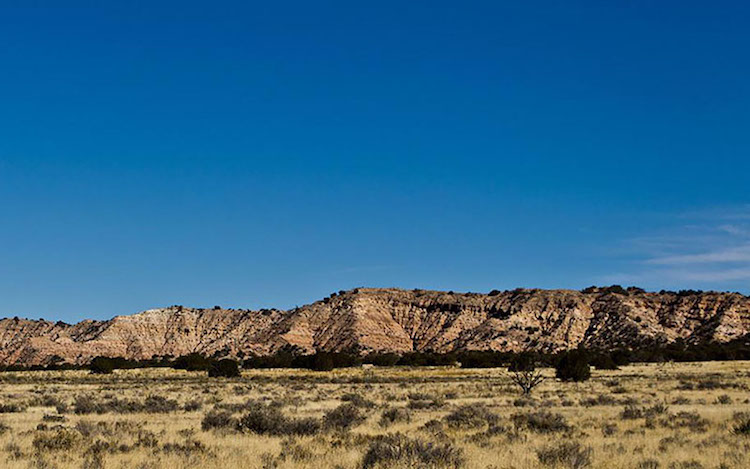- Home
- The Issues
- Time Running Out For Navajo Landowners To Take Part In Federal Buy-Back Program

Time Running Out For Navajo Landowners To Take Part In Federal Buy-Back Program
Deadlines are beginning to loom over Navajo landowners who want to participate in the second round of a $1.9 billion federal buy-back program to accumulate dispersed secluded Navajo Nation land. Tribal members currently have until Sept. 30 to take part.
The Interior Department estimates that $157 million worth of Navajo land out there could still qualify. 19,978 Navajo landowners were contacted, but only $24 million worth of land has been collected as of Aug. 16.
Chris Stainbrook, Oglala Lakota and president of the Indian Land Tenure Foundation says that the buyback program can help tribes create businesses, infrastructure and create agricultural leases.
“One of them (a tribe) in the Southwest was looking to do a major electrical right-of-way, and so when they did their buy-back they asked the department to prioritize those allotments,” Stainbrook said.
This buy-back program was created in response to a $3.4 billion settlement filed by Native Americans against the Interior Department. Native Americans claimed that for over a century, the government mishandled tribal land that they were holding.
This ‘Cobell Settlement’ led to individual payments to Native Americans, a committee on tribal trust reform, a scholarship fund for Native American students, and the buy-back program.
Land buy-backs purchase fractioned property from Native American landowners. Once land was given back to Native Americans in the 19th century, it was divided so many times that sections of the land became useless for development. This is the second buy-back of Navajo land, the first came in 2016 when $106 million was paid back to 11,355 landowners for a total of over 155,000 acres of land accumulated.
Back in 2017, an Interior Department official complained that little land was being accumulated, while a budget that was supposed to last until 2022 had already been used up. Navajo officials agreed that the program was underfunded.
Another issue with the program is that many Navajo landowners do not have their addresses up to date with the agency. This makes it difficult to contact them for buy-back opportunities.
Some Navajo are deciding to swap plots of land with other landowners instead of selling to the government. Combining different holdings allows for more economically usable land.
For some Navajo landowners, selling their plots are simply not an option.
“You go out there and talk to families, and the thing you constantly hear is that’s grandma or grandpa’s land and they said never to sell it,” Stainbrook said. He also noted that for some Native Americans who live off tribal lands, the parcels may be the only connection they have to their heritage.
Heritage and culture are of upmost importance to Native Americans and the government doesn’t exactly have the best track record when dealing with Native American affairs.
